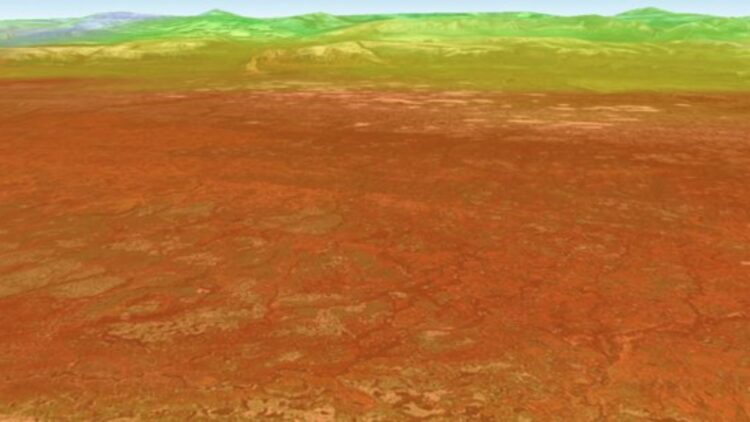At first glance, the rusty rivers that cut through the Arctic may seem like just a visual curiosity, a curious effect of ice melting under a warming planet. But behind this reddish hue, there is a silent warning. Scientists say what’s happening in Alaska and other polar regions could soon trigger a chain reaction capable of transforming entire ecosystems, from microscopic life in rivers to the global carbon balance. And the most surprising thing is that the culprit isn’t pollution or a mining accident: it’s the ice itself.
When frozen rivers turn into a chemical reactor
When researchers first flew over Alaska’s Kutuk River, they were struck by its color. The once-crystalline waters had turned a deep orange, stretching for miles across the permafrost plains. The same hue now stains at least 75 other streams in the Brooks Range. For years, climate change was suspected. But the question lingered: how could melting ice cause rivers to rust?
This answer began to emerge when a team from Umeå University, in Sweden, published a study in the journal PNAS, revealing that frozen water can trigger stronger chemical reactions than liquid water. As ice forms, it creates microscopic pockets of liquid water between the crystals, which function as highly acidic mini-chemical reactors, capable of dissolving iron minerals even at -30°C. What scientists discovered next was alarming. Each freeze-thaw cycle, now more frequent due to global warming, releases iron, copper, and zinc from the soil into rivers. When these metals come into contact with the air, they oxidize and stain the water rusty.
When melting ground turns rivers toxic
The Salmon River, described by writer John McPhee in 1977 as “the purest, most crystal-clear water I have ever seen,” is now a chemical cocktail. Since 2019, its waters have taken on shades of orange and yellow, reminiscent of acidic mining waste, except there are no mines nearby. Researchers have identified the real culprit: melting permafrost. Ecologist Paddy Sullivan of the University of Alaska Anchorage has identified more than 500 sites where acidic water escapes from the frozen ground, destroying vegetation before reaching waterways.
Remember that between 2022 and 2023, measurements showed concentrations of iron, copper, and nickel up to 37 times higher than ten years ago — levels capable of eliminating aquatic insects, such as mayflies and plecoptera, the base of the fish food chain. Without them, salmon populations began to plummet. Even though the local limestone helps neutralize some of the acidity, the metals remain, permeating the sediments and slowly poisoning ecosystems. This discovery even reminds us of those radioactive lakes in the U.S. where strange life thrives.
The Arctic’s orange rivers are just the beginning of the change
At first glance, rusty rivers may seem like a local curiosity, but their impact extends to:
- The carbon cycle at risk: Permafrost harbors 1.5 trillion tons of carbon. As these layers thaw and oxidize, they can release enormous volumes of CO₂ and methane, further intensifying global warming, the very process that started the problem.
- A visible warning: For scientist Rose Cory of the University of Michigan, this phenomenon is “a visible symptom of an invisible chemistry.” In her words: “What we are seeing is the chemical awakening of frozen landscapes that have remained stable for thousands of years.”
If orange rivers are the first sign, what comes next could redefine the planet’s climate system, and faster than anyone imagined. What began as an aesthetic anomaly has become a planetary alarm, showing how fragile frozen ecosystems are in the face of human heat. It’s no wonder that a strange pink snow spotted in America now turns orange.


